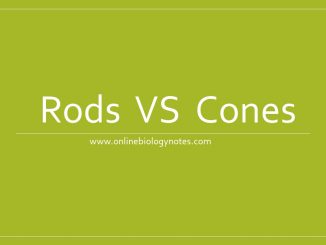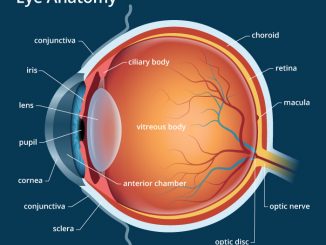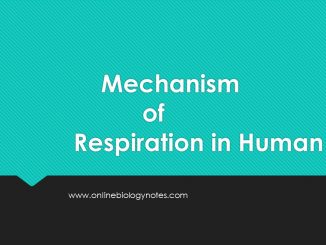
Difference between rods and cones
Difference between rods and cones Point of difference RODS CONES Number More numerous, 125 millions in each eye Less than rods, 7 millions in each […]

Difference between rods and cones Point of difference RODS CONES Number More numerous, 125 millions in each eye Less than rods, 7 millions in each […]

Human Eye: Anatomy, parts and structure The eye is the photo-receptor organ. Size and shape: Human eye is spherical about 2.5 cm in diameter. Location: […]

Pulmonary air volume and capacities In normal quiet breathing there are about 15 complete respiratory cycles per minute. The amount of air exchanged during breathing […]

Oxygen dissociation curve The effect of carbon dioxide and acidity favor the formation of Oxyhaemoglobin at low concentration of CO2 and H+ ion and causes […]

Chloride shift/Hamburger phenomenon The greater proportion (70%) of carbon dioxide is transported in the form of bicarbonates. The CO2 reacted with the water of the […]

Entire physiology of respiration involves following steps Breathing or pulmonary ventilation External respiration Transport of O2 to tissue Internal respiration Transport of CO2 from tissue […]

Physiology of digestion Digestion: Digestion is the process of gradual break down of foods that we eat in a soluble form suitable for absorption. For […]

Salivary gland The human salivary gland is an exocrine gland. The salivary gland includes- the paired parotid, submandibular, and sublingual glands. The major function of […]

Characteristics of permanent tissue: Permanent tissues are derivatives of meristematic tissue They are mature tissue and the cell have lost the capacity of cell division. […]

Characteristics of meristematic tissue (Greek word; meristos- means “divisible”) Meristematic tissue is a group of cells that has power of continuous division. Cells are immature […]
Copyright © 2024 | WordPress Theme by MH Themes